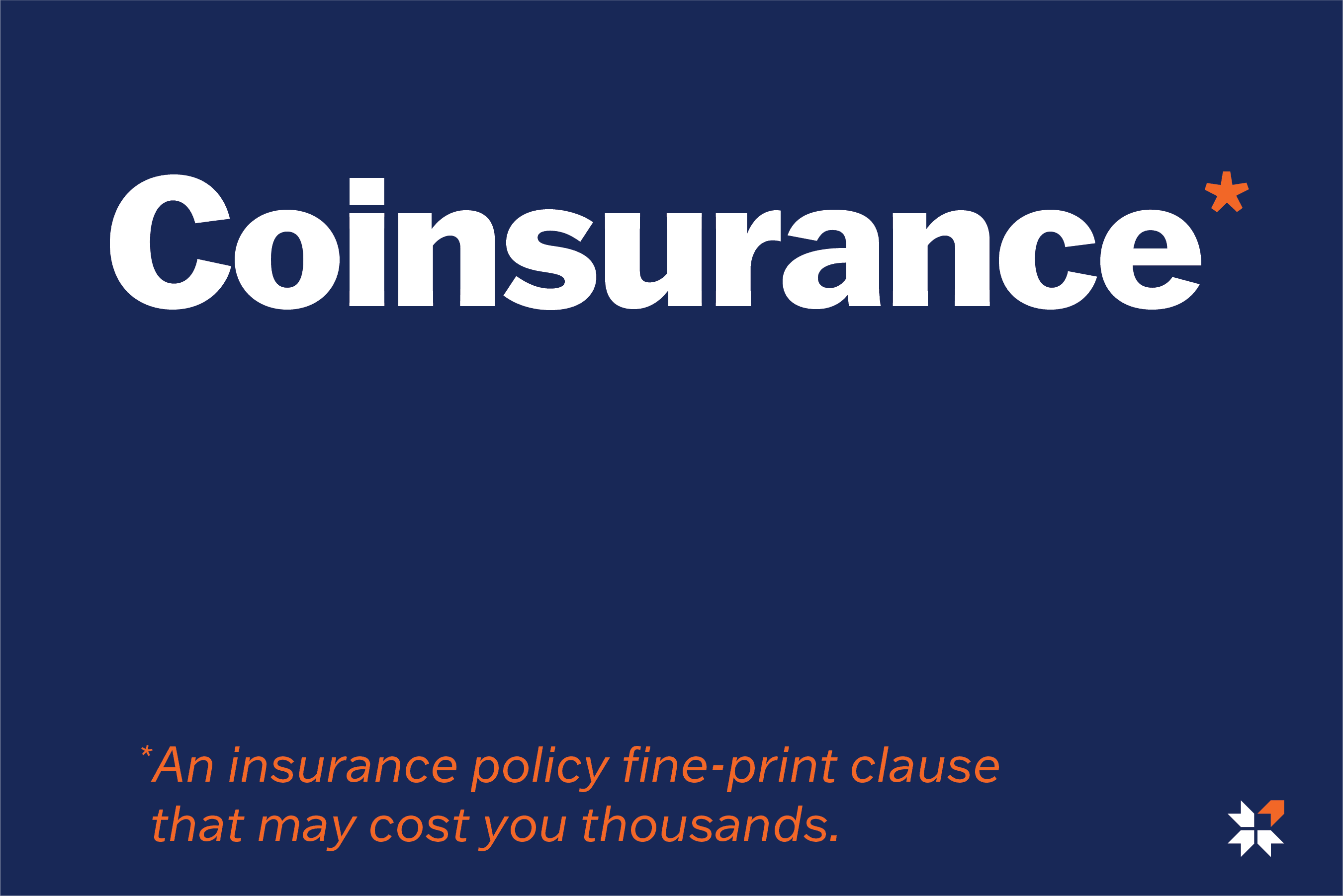
Coinsurance. It isn’t very exciting.
It is however one of the most important aspects of your Commercial Property insurance policy, and, unfortunately, it is also one of the most complicated and misunderstood terms in commercial insurance. While I can’t make it exciting, I can at least make Property coinsurance simple to understand so that you can avoid a major problem at the time of a claim.
One of the reasons my clients get confused by coinsurance is because the term is also used in Health insurance, and they may be familiar with how it works on those policies. However, coinsurance works very differently on Property insurance, so you will want to push anything related to Health insurance out of your mind for right now.
Here is the simplest way to understand coinsurance: It is a penalty that could reduce your claim payment if you aren’t carrying a coverage limit on your Property insurance that is close to the full REPLACEMENT value of the property.
A coinsurance penalty will reduce the final payout for property claims based on the gap between the amount of coverage you should have purchased, and the amount of coverage you did purchase. Let’s look at a simple example to help this make sense.
Coinsurance Penalty Example
Let’s assume a business owns a building with an actual replacement cost of $1,000,000, and their insurance policy includes an 80% coinsurance clause. This means their obligation is to insure the building to a limit of at least $800,000 in order to avoid a coinsurance penalty (80% of the $1,000,000 replacement cost value). But let’s say the business only obtains $600,000 in coverage. During the policy term, there is a fire that causes $200,000 in damage. Because the business wasn’t carrying the required $800,000 of coverage, they are in violation of the coinsurance clause and the insurer will lower their claim payout by the percentage between the amount of coverage they DID carry and the amount they SHOULD HAVE carried.
$600,000 (coverage carried)
/ $800,000 (coverage they should have carried based on 80% coinsurance)
= 75%
This means that since the business was only carrying 75% of the coverage they were supposed to, they will only receive a 75% payout for their $200,000 of damage, or $150,000. The remaining $50,000 will need to come out of their own pocket.
How do I avoid a coinsurance penalty?
This is the most important question, and, fortunately, the answer is an easy one. If you insure your property to its full replacement value, then you don’t need to be concerned about a coinsurance penalty. Just remember that most policies are based on replacement cost, not market value. Replacement cost is the cost to fully rebuild your building in the event of a total loss. This means that determining the full replacement value is not as simple as knowing what the current market value is. Typically, it will require completing a Replacement Cost Estimator (which your broker or insurance carrier can do), getting a formal replacement cost appraisal, or talking to a builder who can provide you with a solid estimate of the replacement cost.
In addition, because coinsurance clauses can only hurt policyholders during a claim, many businesses try to remove them when negotiating with carriers. The primary way to do this is by obtaining an Agreed Value endorsement on your Property insurance policy.
Agreed value: During the underwriting process, you and the insurer can negotiate on a set value for your property. The value is generally determined by a Replacement Cost Estimator conducted by the insurance agent, or by an official replacement cost appraisal. Once this figure is agreed upon by the insurance company, they will waive the coinsurance provision of the policy. Keep in mind, the agreed value only applies to the policy’s term, and you need to update this figure when renewing a policy. There is an additional premium cost, but it provides peace of mind knowing that there will be no coinsurance penalty at the time of a claim.
It may be tempting to save on premiums by only purchasing coverage for a portion of your building’s value and to take a gamble that you will never have a total loss. However, this puts your business at significant risk. In the event of a total loss, your policy would not provide you with the funds you need to rebuild your building. In the event of a partial loss, you would be subject to a coinsurance penalty and would only receive part of your claim payment. Either way, you are at risk.
Coinsurance penalties can be a shocking surprise when you have a loss, especially if the value of your property is higher than you thought. This can happen easily in an era of rising construction costs. You should work with your insurance broker to determine an appropriate limit of coverage in order to ensure that you don’t get surprised, and that your Property insurance will protect you fully from a loss.
